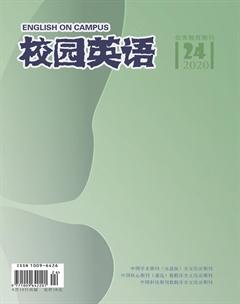Differentiated Foreign Language Instruction: A Review of Effective Practices
【Abstract】This paper is focus on 3 questions: (a) How can teachers differentiate instruction based on student interests? (b) How can teachers differentiate the classroom based on student current and developing levels of readiness? (c) How can teachers differentiate the classroom based on learning profiles? This review concludes that foreign language instructors should be quipped with differentiated instructional strategies since differentiated instruction is the key solution to respond to student variance and learning diversity.
【Key words】Differentiated instruction; student interest; learning profile; readiness
【作者簡介】蔡婉琪(1990.12-),女,汉族,陕西西安人,西安欧亚学院,助教,硕士研究生,研究方向:外语教学法。
1.Background
Todays classrooms are typified by academic diversity. This diversity compels educators to think about their teaching practices and classroom routines and reflect on whether they are all-inclusive and effective in engaging culturally and linguistically diverse students, students with disabilities, and talented students. To meet these goals, it is important to figure out the instructional strategies that can attend to student variance. Such strategies have been referred to as “differentiated instruction”.
2. Differentiating the Classroom Based on Student Interests
Student interests vary. These interests can become effective tools to support learning in the differentiated classroom. Teachers should engage and involve students in classrooms by having the aid of student interest. Also, interests can contribute to academic achievement. It appears that interest would increase students sense of competence and self-determination. For teachers, knowing student interests is supportive for it could lead to positive learning behaviors such as persistence in seeking knowledge and willingness to accept challenges.
3. Differentiating the Classroom Based on Student Current and Developing Levels of Readiness
There are two theories that support the idea of teaching based on student readiness. Firstly, it is important for teachers to understand the term “zone of proximal development” (ZPD) from sociocultural theory. Secondly, the brain-based learning theory——students should work at a level of “moderate challenge” for learning to occur. Students must be appropriately challenged and the teaching content must be neither too difficult nor too easy. Thus, theory related to learner readiness suggests that instruction should always “be in advance” of a childs current level of mastery. If learning materials are presented at or below the mastery level, there will be no growth. If presented well above the zone, children will be confused and frustrated.
4. Differentiating the Classroom Based on Learning Profiles
As it is beneficial to student learning for teachers to respond to their readiness levels and interests, it also appears beneficial to address student variance in learning profiles. Learning profiles can be used to differentiate topics, method of learning, and manner of demonstrating learning in a classroom. A students learning profile is the complete picture of his or her learning preferences, strengths, and challenges. It is the responsibility of the teacher to create an environment and learning experiences with enough flexibility for each student to feel welcomed, engaged and productive.
5. Educational Implications
It appears important for teachers to adjust instruction methods consistently, defensibly, and vigorously in response to student readiness, interest, and learning profile. Student readiness levels suggest that challenges must be at the proper level of difficulty in order to be and remain motivating. That is, tasks that are too easy become boring, however, tasks that are too difficult will cause frustration. Student interest is critical to todays classroom, especially for teachers who want to apply differentiated instruction in their classrooms. Therefore, students should be encouraged to select their own topics for projects and to engage in discussions with partners about learning that brings them joy. Learning profiles can be used to differentiate topics, method of learning, and manner of demonstrating learning in a classroom. A students learning profile is the complete picture of his or her learning preferences, strengths, and challenges. It is the responsibility of the teacher to create an environment and learning experiences with enough flexibility for each student to feel welcomed, engaged, and productive.
Differentiation must be conceived and practiced as an essential instruction strategy by more and more teachers and teacher candidates. Instruction methods and curriculum should be modified to fit for academically diverse learners so that student learning could achieve higher.
References:
[1]Fine, D. A sense of learning style[J]. Principal Leadership, 2003,4(2):55-60.
[2]MacGillivray, L., & Rueda, R. Listening to inner city teachers of English language learners: Differentiating literacy instruction[J]. 2003.
[3]Tomlinson, C. A., Moon, T. R., and Callahan, C. M. How well are we addressing academic diversity in the middle school?[J]. Middle School Journal, 1998,29(3):3-11.
[4]Vygotsky, L. Interaction between learning and development[J]. Readings on The Development of Children, 1978,23(3):34-41.

